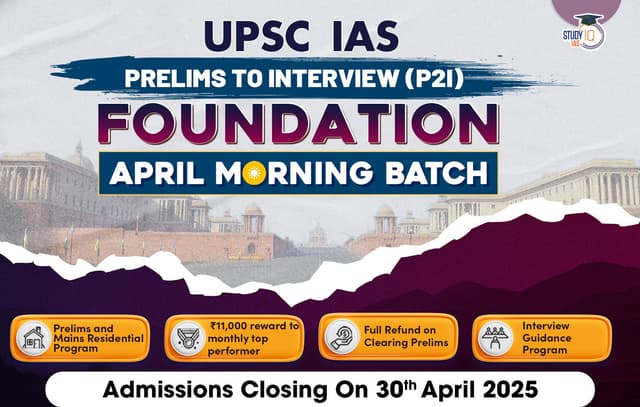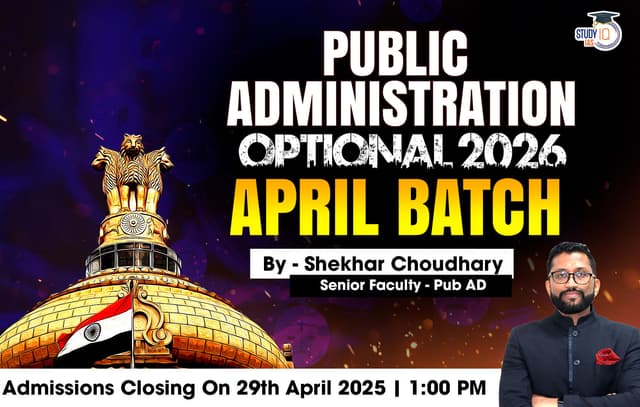UPSC Prelims News of 13 January 2023
Indian Skimmers
Context: Around 250 Indian Skimmers were sighted recently, in Coringa Wildlife Sanctuary in a day during the Asian Waterbird Census-2023.
- The common name for Indian Skimmers is Indian scissors bill, which are found in the coastal estuaries of western and eastern India.
- Its Scientific name is Rynchops albicollis.
- Protection Status
- IUCN Red List: Endangered
- CITES: Not Listed
- These skimmer species do not normally occur in forests. They inhabit various natural open, wetland ecosystems like freshwater lakes, permanent freshwater marshes, sandy, lowland rivers, permanent rivers, streams and creeks. The non-breeding population may move to estuaries and coasts.
- Threats endangering the species include Habitat loss, damming of the rivers, predation and widespread increase in human disturbance.
- Coringa Wildlife Sanctuary is an estuary situated near Kakinada in Andhra Pradesh.

UPSC Prelims News 12 January 2023
Neelakurinji
- Context: Neelakurinji have been added under Schedule III of the Wildlife (Protection) Act, 1972 by the Ministry of Environment.
- Neelakurinji, scientifically known as Strobilanthes kunthiana, are a variety of plants belonging to Strobilanthes genus.
- The flower has 250 varieties and they bloom at different times. While some bloom in a gap of 5 years, others take around 12 and 14 years.
- A total of 46 varieties of Neelakurinji flowers are found in India, in states of Kerala, Karnataka and Tamil Nadu. The plant has also got medicinal value.
- Specialty: The flowers grow at an altitude of 1,300 to 2,400m in Shola forests of Western Ghats.
- Nilgiri Hills of Tamil Nadu get their name from the bluish-purplish flowers that are Neelakurinji.
- Protection: The government of Kerala established the Kurinjimala Sanctuary to protect the habitat of the plant in Idukki district of the state.
- Cultural role: The Paliyan tribal people living in Tamil Nadu used it as a reference to calculate their age.
- Kurinji flower is used to describe the associated mountainous landscape where it blooms in classical Tamil literature.

EBOLA
- Context: The WHO has announced that the Ebola outbreak in Uganda has subsided.
- Ebola is a viral infection caused by ebolavirus, a member of the Filoviridae.
- Origin: It first originated in 1976 in 2 simultaneous outbreaks, one in South Sudan, and the other in DRC (near the Ebola river).
- Transmission: Fruit bats are the reservoirs of the virus. The infection is transmitted between humans through blood, secretions, organs or other bodily fluids.
- Symptoms: Initial symptoms include fever, muscle ache, fatigue. The advanced symptoms include diarrhea, rashes, internal bleeding, and impaired internal organs.
- Mortality: The average mortality rate is around 50%. Case fatality rates have varied from 25% to 90% in past outbreaks.
- Prevention: Preventive measures include containment, reducing wildlife contacts, vaccination, maintaining hygiene etc.
- Treatment: Treatments include blood products, immune therapies and drug therapies. The Ervebo vaccine has shown promising results.

Pineapple Express
Context: As California has experienced flooding due to severe rains over the past two weeks, forecasters said they are a result of a phenomenon called ‘Pineapple Express’.
- Pineapple Express is a strong atmospheric river that is capable of bringing moisture from the tropics near Hawaii over to the U.S. West Coast.
- About Atmospheric Rivers (ARs)
- ARs are relatively long, narrow, shallow and horizontal water vapour transport systems in the atmosphere – like rivers in the sky – that transport most of the water vapor outside of the tropics.
- Characteristics:
- An AR is greater than 2,000 km long, less than 1,000 km wide, and averages 3 km in depth.
- They are associated with a low-level jet stream ahead of the cold front of an extra tropical cyclone.
- They carry huge amounts of water vapour roughly equivalent to 7.5-15 times the average flow of water at the mouth of Mississippi river.
- They transport moisture from tropics to mid and high latitudes. They release the moisture in the form of rain or snow.
- Significance:
- On any given day, ARs account for over 90% of the global Meridional (north-south) water transport yet they cover less than 10% of earth’s circumference.
- They contribute to about 22% of global runoff.
- How do they form? Atmospheric rivers usually begin over tropical regions. Warm temperatures there cause ocean water to evaporate and rise into the atmosphere. Strong winds help to carry the water vapor through the atmosphere.
- Where do they occur? ARs typically occur in the extra tropical North Pacific/Atlantic, southeastern Pacific, and South Atlantic oceans often making landfall on the west coasts of North and South America.
- Effect of Climate change on ARs:
- Due to global warming, there was an increasing trend in the AR activity since the mid-20th century.
- Due to the effects of Climate Change, ARs are experiencing a poleward shift.

M Sand
Why in News? Coal India Limited (CIL) has started a facility in West Bengal to produce manufactured sand.
About:
- M Sand is artificial sand made from the crushing of rock or granite for construction purposes in cement or concrete.
- It is used as a substitute for river sand.
- M sand differs from natural river sand in its physical and mineralogical properties.
- It is highly cohesive and compressive in strength. It requires a lower water-cement ratio.
- It does not have the presence of impurities such as clay, dust, and silt coatings.
- Manufacturing sand also eliminates the environmental impact that occurred due to the lifting of natural sand from the riverbed.

Duchenne Muscular Dystrophy (DMD)
Why in News? Researchers in India are working on developing an affordable treatment for a rare and incurable genetic disorder called Duchenne Muscular Dystrophy.
About:
- DMD is the most common and fatal type of muscular dystrophy, marked by progressive muscle degeneration and weakness due to alterations of a protein called “dystrophin” that helps keep muscle cells intact.
- The condition is predominantly seen in boys, but in rare cases, it can also affect girls.
- Currently, there is no cure for DMD, but improvements in integrative treatment can slow down the disease’s progression.
- Despite its severity in terms of systemic muscle impairment culminating in multi organ failure and death.

Very Short-Range Air Defence System (VSHORADS)
Why in News? The Defence Acquisition Council (DAC) accorded Acceptance of Necessity (AoN) to procure the VSHORAD missile system, for the Army and Navy.
About:
- VSHORAD is a Man Portable Air Defence System (MANPAD) designed and developed by the Defence Research and Development Organisation (DRDO).
- VSHORADS missile incorporates many novel technologies including a miniaturized Reaction Control System (RCS) and integrated avionics, which have been successfully proven during the tests.
- The missile, meant for neutralizing low-altitude aerial threats at short ranges, is propelled by a dual-thrust solid motor.
- This new missile equipped with modern technologies will give a further technological boost to the Armed Forces.
Golden Globes Award
Why in News? Recently, Naatu Naatu song won the Best Original Song Award at the 80th Golden Globe Awards.
About:
- Golden Globe Award is presented annually by the Hollywood Foreign Press Association (HFPA).
- It is a recognition of outstanding achievements in motion pictures and television during the previous year.
- The Golden Globes are considered second in importance to the Academy Awards (or Oscars) for films.
- The 80th Golden Globe Awards were held in Beverly Hills, California.
MV Ganga Vilas
Why in News? The Prime Minister has flagged off World’s Longest River Cruise-MV Ganga Vilas and inaugurated the Tent City at Varanasi recently.
About:
- MV Ganga Vilas will begin its journey from Varanasi in Uttar Pradesh and travel around 3,200 km in 51 days to reach Dibrugarh in Assam via Bangladesh, sailing across 27 river systems in India and Bangladesh.
- MV Ganga Vilas has three decks, 18 suites on board with a capacity of 36 tourists, with all the luxury amenities.
- The 51 days cruise is planned with visits to 50 tourist spots including World Heritage Sites, National Parks, River Ghats, and major cities.
- The journey will give the tourists an opportunity to embark upon an experiential voyage and indulge in the art, culture, history, and spirituality of India and Bangladesh.

Multi-State Cooperative Organic Society
Context: The Cabinet has approved the setting up of a national-level multi-state cooperative organic society under the Multi-State Cooperative Societies (MSCS) Act, 2002.
About:
- It will manage various activities related to the organic sector by providing certified and authentic organic products.
- It will also help cooperatives and ultimately their farmer members in getting benefits of the high price of organic products through aggregation, branding and marketing on a large scale by facilitating testing and certification at affordable cost.
- It will also facilitate in providing technical guidance, training and capacity building of organic producers.



 UPSC Prelims News 20 March 2023
UPSC Prelims News 20 March 2023
 UPSC Prelims News 17 March 2023
UPSC Prelims News 17 March 2023





















